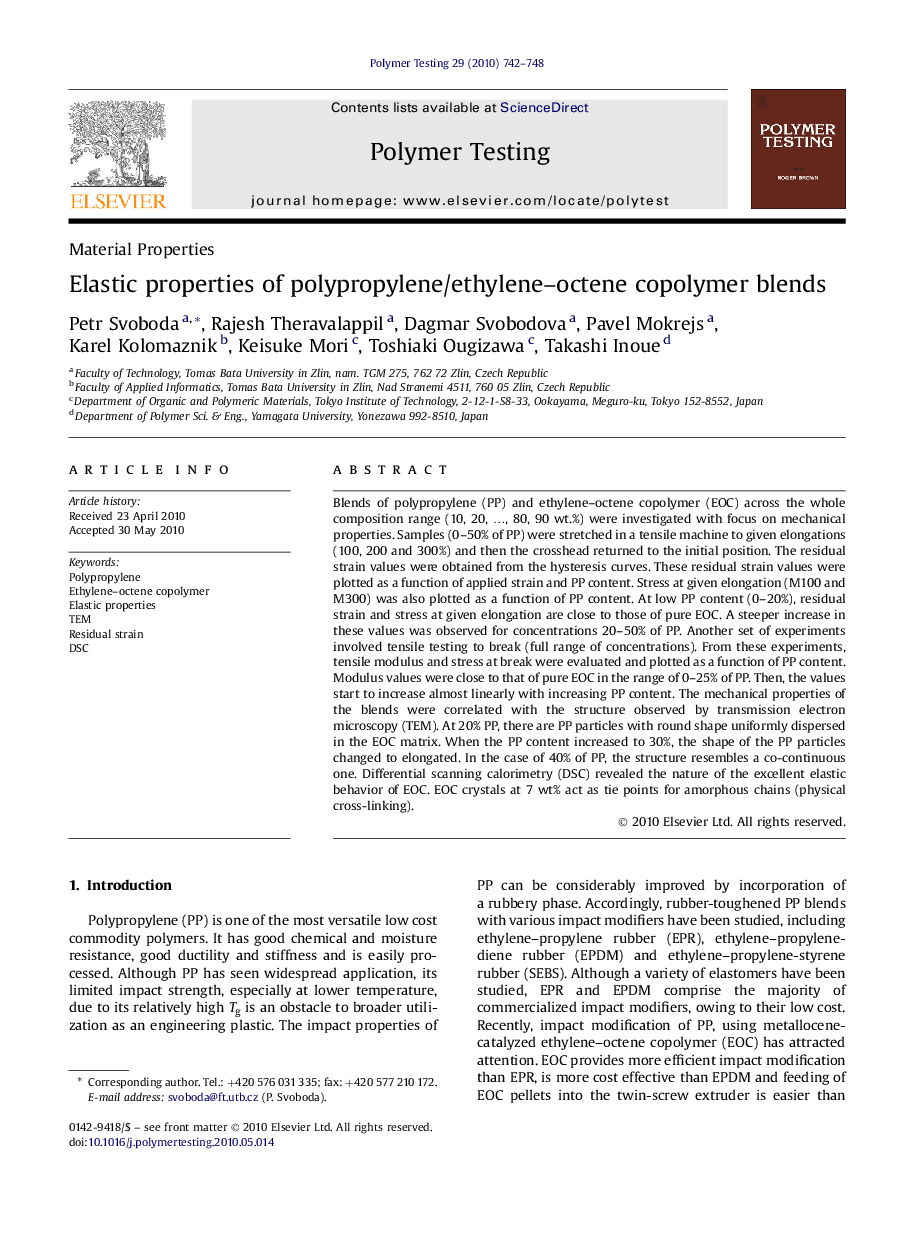| Article ID | Journal | Published Year | Pages | File Type |
|---|---|---|---|---|
| 5206913 | Polymer Testing | 2010 | 7 Pages |
Abstract
Blends of polypropylene (PP) and ethylene-octene copolymer (EOC) across the whole composition range (10, 20, â¦, 80, 90 wt.%) were investigated with focus on mechanical properties. Samples (0-50% of PP) were stretched in a tensile machine to given elongations (100, 200 and 300%) and then the crosshead returned to the initial position. The residual strain values were obtained from the hysteresis curves. These residual strain values were plotted as a function of applied strain and PP content. Stress at given elongation (M100 and M300) was also plotted as a function of PP content. At low PP content (0-20%), residual strain and stress at given elongation are close to those of pure EOC. A steeper increase in these values was observed for concentrations 20-50% of PP. Another set of experiments involved tensile testing to break (full range of concentrations). From these experiments, tensile modulus and stress at break were evaluated and plotted as a function of PP content. Modulus values were close to that of pure EOC in the range of 0-25% of PP. Then, the values start to increase almost linearly with increasing PP content. The mechanical properties of the blends were correlated with the structure observed by transmission electron microscopy (TEM). At 20% PP, there are PP particles with round shape uniformly dispersed in the EOC matrix. When the PP content increased to 30%, the shape of the PP particles changed to elongated. In the case of 40% of PP, the structure resembles a co-continuous one. Differential scanning calorimetry (DSC) revealed the nature of the excellent elastic behavior of EOC. EOC crystals at 7 wt% act as tie points for amorphous chains (physical cross-linking).
Related Topics
Physical Sciences and Engineering
Chemistry
Organic Chemistry
Authors
Petr Svoboda, Rajesh Theravalappil, Dagmar Svobodova, Pavel Mokrejs, Karel Kolomaznik, Keisuke Mori, Toshiaki Ougizawa, Takashi Inoue,
